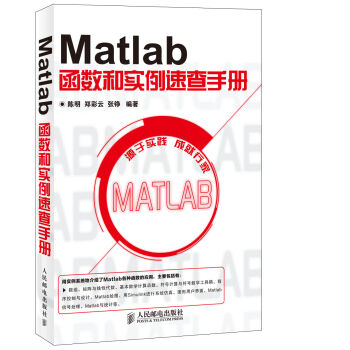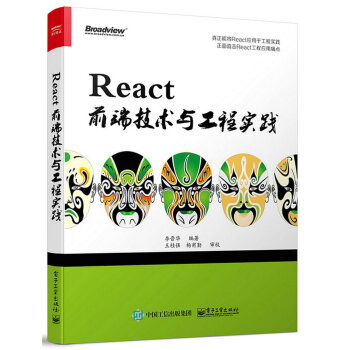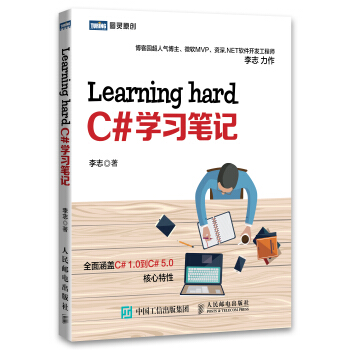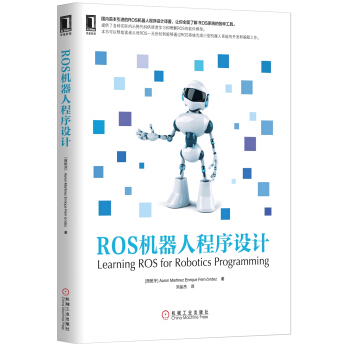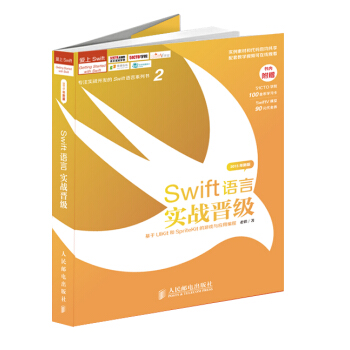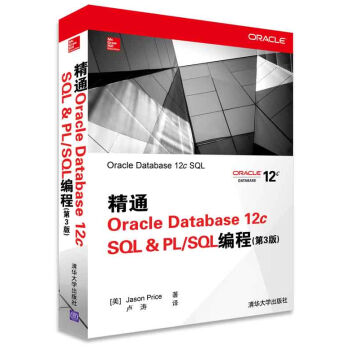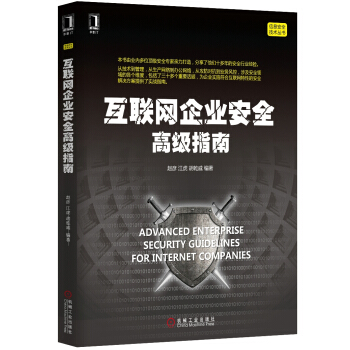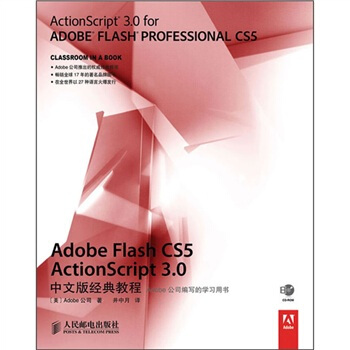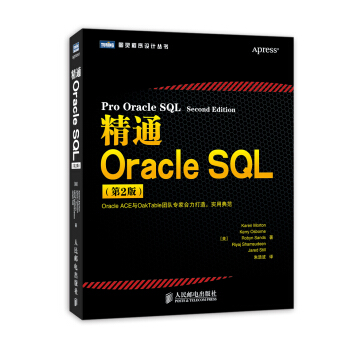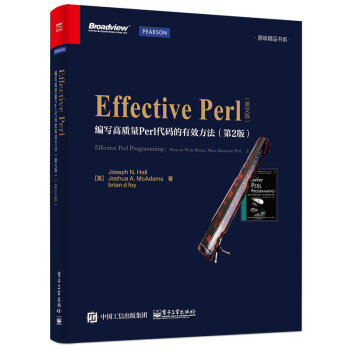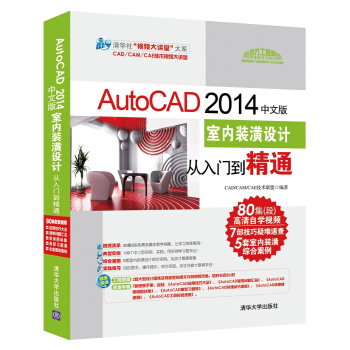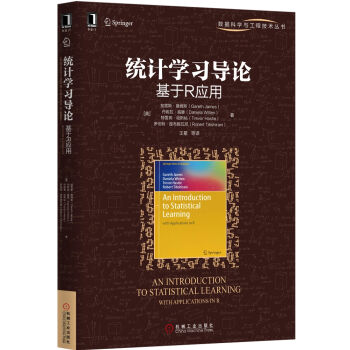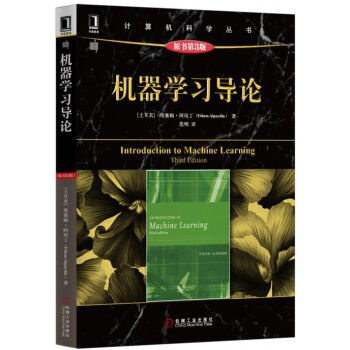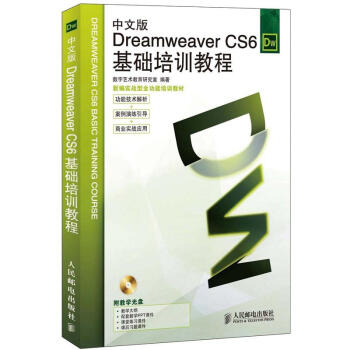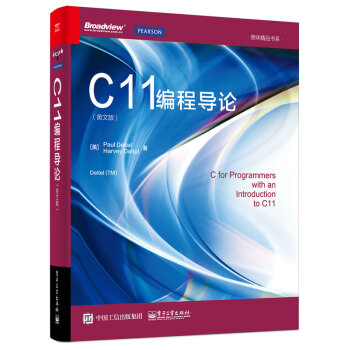

具体描述
产品特色
内容简介
《C11编程导论英文版》沿用了Deitel特色的“程序实况解说”,深入探讨了C语言和C标准库。通过完整的语法着色、代码高亮、代码演练和程序输出,全面地介绍了测试程序的概念。《C11编程导论英文版》汇集约5000行C代码和数百个开发技巧,将帮助你构建强大的应用程序。《C11编程导论英文版》的内容包括构建自定义数据结构、标准库等;并选择了C11标准的一些新特性,如多线程来帮助你为目前的多核系统编写高性能的应用程序;C语言安全编程部分展示了如何让你编写的程序具有更好的鲁棒性,不易受到攻击。《C11编程导论英文版》适合具有一定高级语言编程背景的程序员阅读。
作者简介
Paul Deitel,Deitel & Associates有限公司的CEO兼CTO,毕业于麻省理工学院,主修信息技术。在Deitel & Associate有限公司公司工作的过程中,他已经为行业、政府机关和军队客户提供了数百节编程课程,这些客户包括思科、IBM、西门子、Sun Microsystems、戴尔、Fidelity、肯尼迪航天中心、美国国家强风暴实验室、白沙导弹试验场、Rogue Wave Software、波音公司、SunGard Higher Education、北电网络公司、彪马、iRobot、Invensys等。他和本书的合著者Harvey M. Deitel博士是全球畅销编程语言教材、专业书籍和视频的作者。Harvey Deitel博士,Deitel & Associates有限公司的董事长和首席战略官,在计算机领域中拥有50多年的经验。Deitel博士获得了麻省理工学院电子工程(学习计算)的学士和硕士学位,并获得了波士顿大学的数学博士学位(学习计算机科学)。他拥有丰富的行业和大学教学经验,在1991年与儿子Paul Deitel创办Deitel & Associates有限公司之前,他是波士顿大学计算机科学系的主任并获得了终身任职权。Deitel博士为很多大公司、学术研究机构、政府机关和军方提供了数百场专业编程讲座。Deitel的出版物获得了国际上的认可,并被翻译为繁体中文、简体中文、韩语、日语、德语、俄语、西班牙语、法语、波兰语、意大利语、葡萄牙语、希腊语、乌尔都语和土耳其语。
目录
前言1 Introduction
1.1 Introduction
1.2 The C Programming Language
1.3 C Standard Library
1.4 C++ and Other C-Based Languages
1.5 Typical C Program Development Environment
1.5.1 Phase 1: Creating a Program
1.5.2 Phases 2 and 3: Preprocessing and Compiling a C Program
1.5.3 Phase 4: Linking
1.5.4 Phase 5: Loading
1.5.5 Phase 6: Execution
1.5.6 Standard Input, Standard Output and Standard Error Streams
1.6 Test-Driving a C Application in Windows, Linux and Mac OS X
1.6.1 Running a C Application from the Windows Command Prompt
1.6.2 Running a C Application Using GNU C with Linux
1.6.3 Running a C Application Using GNU C with Mac OS X
1.7 Operating Systems
1.7.1 Windows―A Proprietary Operating System
1.7.2 Linux―An Open-Source Operating System
1.7.3 Apple’s Mac OS X; Apple’s iOS ? for iPhone ? , iPad ? and iPod Touch ? Devices
1.7.4 Google’s Android
2 Introduction to C Programming
2.1 Introduction
2.2 A Simple C Program: Printing a Line of Text
2.3 Another Simple C Program: Adding Two Integers
2.4 Arithmetic in C
2.5 Decision Making: Equality and Relational Operators
2.6 Secure C Programming
3 Control Statements: Part I
3.1 Introduction
3.2 Control Structures
3.3 The if Selection Statement
3.4 The if … else Selection Statement
3.5 The while Repetition Statement
3.6 Class Average with Counter-Controlled Repetition
3.7 Class Average with Sentinel-Controlled Repetition
3.8 Nested Control Statements
3.9 Assignment Operators
3.10 Increment and Decrement Operators
3.11 Secure C Programming
4 Control Statements: Part II
4.1 Introduction
4.2 Repetition Essentials
4.3 Counter-Controlled Repetition
4.4 for Repetition Statement
4.5 for Statement: Notes and Observations
4.6 Examples Using the for Statement
4.7 switch Multiple-Selection Statement
4.8 do … while Repetition Statement
4.9 break and continue Statements
4.10 Logical Operators
4.11 Confusing Equality ( == ) and Assignment ( = ) Operators
4.12 Secure C Programming
5 Functions
5.1 Introduction
5.2 Program Modules in C
5.3 Math Library Functions
5.4 Functions
5.5 Function Definitions
5.6 Function Prototypes: A Deeper Look
5.7 Function Call Stack and Stack Frames
5.8 Headers
5.9 Passing Arguments By Value and By Reference
5.10 Random Number Generation
5.11 Example: A Game of Chance
5.12 Storage Classes
5.13 Scope Rules
5.14 Recursion
5.15 Example Using Recursion: Fibonacci Series
5.16 Recursion vs. Iteration
5.17 Secure C Programming
6 Arrays
6.1 Introduction
6.2 Arrays
6.3 Defining Arrays
6.4 Array Examples
6.5 Passing Arrays to Functions
6.6 Sorting Arrays
6.7 Case Study: Computing Mean, Median and Mode Using Arrays
6.8 Searching Arrays
6.9 Multidimensional Arrays
6.10 Variable-Length Arrays
6.11 Secure C Programming
7 Pointers
7.1 Introduction
7.2 Pointer Variable Definitions and Initialization
7.3 Pointer Operators
7.4 Passing Arguments to Functions by Reference
7.5 Using the const Qualifier with Pointers
7.5.1 Converting a String to Uppercase Using a Non-Constant Pointer to Non-Constant Data
7.5.2 Printing a String One Character at a Time Using a Non-Constant Pointer to Constant Data
7.5.3 Attempting to Modify a Constant Pointer to Non-Constant Data
7.5.4 Attempting to Modify a Constant Pointer to Constant Data
7.6 Bubble Sort Using Pass-by-Reference
7.7 sizeof Operator
7.8 Pointer Expressions and Pointer Arithmetic
7.9 Relationship between Pointers and Arrays
7.10 Arrays of Pointers
7.11 Case Study: Card Shuffling and Dealing Simulation
7.12 Pointers to Functions
7.13 Secure C Programming
8 Characters and Strings
8.1 Introduction
8.2 Fundamentals of Strings and Characters
8.3 Character-Handling Library
8.3.1 Functions isdigit , isalpha , isalnum and isxdigit
8.3.2 Functions islower , isupper , tolower and toupper
8.3.3 Functions isspace , iscntrl , ispunct , isprint and isgraph
8.4 String-Conversion Functions
8.4.1 Function strtod
8.4.2 Function strtol
8.4.3 Function strtoul
8.5 Standard Input/Output Library Functions
8.5.1 Functions fgets and putchar
8.5.2 Function getchar
8.5.3 Function sprintf
8.5.4 Function sscanf
8.6 String-Manipulation Functions of the String-Handling Library
8.6.1 Functions strcpy and strncpy
8.6.2 Functions strcat and strncat
8.7 Comparison Functions of the String-Handling Library
8.8 Search Functions of the String-Handling Library
8.8.1 Function strchr
8.8.2 Function strcspn
8.8.3 Function strpbrk
8.8.4 Function strrchr
8.8.5 Function strspn
8.8.6 Function strstr
8.8.7 Function strtok
8.9 Memory Functions of the String-Handling Library
8.9.1 Function memcpy
8.9.2 Function memmove
8.9.3 Function memcmp
8.9.4 Function memchr
8.9.5 Function memset
8.10 Other Functions of the String-Handling Library
8.10.1 Function strerror
8.10.2 Function strlen
8.11 Secure C Programming
9 Formatted Input/Output
9.1 Introduction
9.2 Streams
9.3 Formatting Output with printf
9.4 Printing Integers
9.5 Printing Floating-Point Numbers
9.6 Printing Strings and Characters
9.7 Other Conversion Specifiers
9.8 Printing with Field Widths and Precision
9.9 Using Flags in the printf Format Control String
9.10 Printing Literals and Escape Sequences
9.11 Reading Formatted Input with scanf
9.12 Secure C Programming
10 Structures, Unions, Bit Manipulation and Enumerations
10.1 Introduction
10.2 Structure Definitions
10.2.1 Self-Referential Structures
10.2.2 Defining Variables of Structure Types
10.2.3 Structure Tag Names
10.2.4 Operations That Can Be Performed on Structures
10.3 Initializing Structures
10.4 Accessing Structure Members
10.5 Using Structures with Functions
10.6 typedef
10.7 Example: High-Performance Card Shuffling and Dealing Simulation
10.8 Unions
10.8.1 Union Declarations
10.8.2 Operations That Can Be Performed on Unions
10.8.3 Initializing Unions in Declarations
10.8.4 Demonstrating Unions
10.9 Bitwise Operators
10.9.1 Displaying an Unsigned Integer in Bits
10.9.2 Making Function displayBits More Scalable and Portable
10.9.3 Using the Bitwise AND, Inclusive OR, Exclusive OR and Complement Operators
10.9.4 Using the Bitwise Left- and Right-Shift Operators
10.9.5 Bitwise Assignment Operators
10.10 Bit Fields
10.11 Enumeration Constants
10.12 Secure C Programming
11 File Processing
11.1 Introduction
11.2 Files and Streams
11.3 Creating a Sequential-Access File
11.4 Reading Data from a Sequential-Access File
11.5 Random-Access Files
11.6 Creating a Random-Access File
11.7 Writing Data Randomly to a Random-Access File
11.8 Reading Data from a Random-Access File
11.9 Case Study: Transaction-Processing Program
11.10 Secure C Programming
12 Data Structures
12.1 Introduction
12.2 Self-Referential Structures
12.3 Dynamic Memory Allocation
12.4 Linked Lists
12.4.1 Function insert
12.4.2 Function delete
12.4.3 Function printList
12.5 Stacks
12.5.1 Function push
12.5.2 Function pop
12.5.3 Applications of Stacks
12.6 Queues
12.6.1 Function enqueue
12.6.2 Function dequeue
12.7 Trees
12.7.1 Function insertNode
12.7.2 Traversals: Functions inOrder , preOrder and postOrder
12.7.3 Duplicate Elimination
12.7.4 Binary Tree Search
12.8 Secure C Programming
13 Preprocessor
13.1 Introduction
13.2 #include Preprocessor Directive
13.3 #define Preprocessor Directive: Symbolic Constants
13.4 #define Preprocessor Directive: Macros
13.5 Conditional Compilation
13.6 #error and #pragma Preprocessor Directives
13.7 # and ## Operators
13.8 Line Numbers
13.9 Predefined Symbolic Constants
13.10 Assertions
13.11 Secure C Programming
14 Other Topics
14.1 Introduction
14.2 Redirecting I/O
14.3 Variable-Length Argument Lists
14.4 Using Command-Line Arguments
14.5 Notes on Compiling Multiple-Source-File Programs
14.6 Program Termination with exit and atexit
14.7 Suffixes for Integer and Floating-Point Literals
14.8 Signal Handling
14.9 Dynamic Memory Allocation: Functions calloc and realloc
14.10 Unconditional Branching with goto
A Operator Precedence Chart
B ASCII Character Set
C Number Systems
C.1 Introduction
C.2 Abbreviating Binary Numbers as Octal and Hexadecimal Numbers
C.3 Converting Octal and Hexadecimal Numbers to Binary Numbers
C.4 Converting from Binary, Octal or Hexadecimal to Decimal
C.5 Converting from Decimal to Binary, Octal or Hexadecimal
C.6 Negative Binary Numbers: Two’s Complement Notation
D Sorting: A Deeper Look
D.1 Introduction
D.2 Big O Notation
D.3 Selection Sort
D.4 Insertion Sort
D.5 Merge Sort
E Additional Features of the C Standard
E.1 Introduction
E.2 Support for C99
E.3 C99 Headers
E.4 Mixing Declarations and Executable Code
E.5 Declaring a Variable in a for Statement Header
E.6 Designated Initializers and Compound Literals
E.7 Type bool
E.8 Implicit int in Function Declarations
E.9 Complex Numbers
E.10 Variable-Length Arrays
E.11 Additions to the Preprocessor
E.12 Other C99 Features
E.12.1 Compiler Minimum Resource Limits
E.12.2 The restrict Keyword
E.12.3 Reliable Integer Division
E.12.4 Flexible Array Members
E.12.5 Relaxed Constraints on Aggregate Initialization
E.12.6 Type Generic Math
E.12.7 Inline Functions
E.12.8 return Without Expression
E.12.9 __func__ Predefined Identifier
E.12.10 va_copy Macro
E.13 New Features in the C11 Standard
E.13.1 New C11 Headers
E.13.2 Multithreading Support
E.13.3 quick_exit function
E.13.4 Unicode ? Support
E.13.5 _Noreturn Function Specifier
E.13.6 Type-Generic Expressions
E.13.7 Annex L: Analyzability and Undefined Behavior
E.13.8 Anonymous Structures and Unions
E.13.9 Memory Alignment Control
E.13.10 Static Assertions
E.13.11 Floating Point Types
E.14 Web Resources
F Using the Visual Studio Debugger
F.1 Introduction
F.2 Breakpoints and the Continue Command
F.3 Locals and Watch Windows
F.4 Controlling Execution Using the Step Into , Step Over , Step Out and Continue Commands
F.5 Autos Window
G Using the GNU Debugger
G.1 Introduction
G.2 Breakpoints and the run , stop , continue and print Commands
G.3 print and set Commands
G.4 Controlling Execution Using the step , finish and next Commands
G.5 watch Command
Index
前言/序言
用户评价
这本《C11编程导论(英文版)》的封面设计简洁大气,纯净的蓝色背景搭配烫金的标题,瞬间就吸引了我的目光。我本身是一名对计算机科学充满好奇的学生,虽然之前接触过一些基础的编程概念,但对C语言的深入理解却一直是个模糊的愿景。拿到这本书,首先映入眼帘的是它厚实的分量,我立刻感受到一种沉甸甸的知识感,仿佛握着开启一个全新世界的钥匙。翻开第一页,清晰的排版和精心设计的插图立刻打消了我对英文技术书籍晦涩难懂的顾虑。那些生动形象的图示,将抽象的C11新特性,比如 `_Generic` 宏、匿名结构体和联合体等,以一种直观易懂的方式呈现出来,让我倍感惊喜。我已经迫不及待地想要深入探索书中每一个章节,期待它能为我点亮C11编程的智慧火花,让我在这个充满活力的编程领域中,迈出坚实而自信的第一步。
评分作为一名经验丰富的C++开发者,我一直对C语言保持着一种“饮水思源”的态度,它作为许多现代编程语言的基石,其核心思想依然有着重要的价值。这次偶然的机会接触到《C11编程导论(英文版)》,让我有机会重新审视C语言的发展。书中对C11标准引入的`static_assert`、`_Noreturn` 等特性的阐述,我发现这些功能在增强代码的健壮性和可维护性方面起到了关键作用。特别是`static_assert`,它允许在编译时进行断言检查,能够极大地减少运行时错误的可能性,这对于大型项目来说是极其宝贵的。书中在讲解这些新特性时,也适时地对比了C99以及更早的标准,让我们能够清晰地看到C语言是如何在保持其简洁高效的特性的同时,不断演进以适应现代软件开发的挑战。这本书的价值,不仅仅在于传授C11的知识,更在于它展现了编程语言的生命力与进化史。
评分我是一名跨专业学习编程的文科生,起初对于学习一门“底层”语言感到有些畏惧,担心会因为缺乏相关的数学和计算机背景而难以入门。然而,《C11编程导论(英文版)》这本书的出现,就像一缕温暖的阳光,驱散了我心中的阴霾。书中用词非常生动形象,没有使用过多专业术语,即使有,也会通过比喻和类比的方式进行解释,让像我这样的初学者也能轻松理解。例如,在讲解指针的概念时,作者就用了“房间号”的比喻,生动地解释了指针如何指向内存中的特定位置。而且,书中给出的每一个代码示例都非常简洁明了,并且附带了详细的运行结果和分析,让我能够一步步地跟着作者的思路去理解代码的逻辑。我特别喜欢书中“边学边练”的设计,每一个小节之后都有相应的练习题,让我能够及时巩固所学知识。这本书让我真切地感受到了编程的乐趣,也让我对未来继续深入学习其他编程语言充满了信心。
评分我是一名正在准备找工作的计算机专业学生,对语言的掌握程度和对新技术的了解程度是我的短板。在刷题和看面经的过程中,我发现C11标准的相关知识在很多技术岗位的要求中都频繁出现。因此,我毫不犹豫地入手了这本《C11编程导论(英文版)》。这本书最大的亮点在于其深度和广度。它不仅全面覆盖了C11标准的所有核心特性,例如对Unicode字符集的良好支持(`uchar.h`),以及增强的初始化列表功能,还在一些关键领域进行了深入的探讨。例如,在介绍多线程编程时,书中不仅仅讲解了API的使用,还触及了死锁、竞态条件等并发编程中常见的难题,并提出了相应的解决方案。这种深入浅出的讲解方式,让我不仅掌握了C11的语法,更理解了其背后的设计思想和最佳实践。我相信,通过对这本书的系统学习,我能够大大提升自己在面试中的竞争力,为我未来的职业生涯打下坚实的基础。
评分老实说,我之前对C语言的印象还停留在一些古老而陈旧的教程里,感觉它已经不适合现代的软件开发了。然而,偶然间看到这本《C11编程导论(英文版)》,它的出现彻底颠覆了我的认知。书中对于C11标准新增特性的介绍,比如对并发编程的支持(`threads.h` 库)以及更加强大的类型泛化能力,让我眼前一亮。我尤其对其中关于原子操作和内存模型的部分感到好奇,这对于开发高性能、高并发的系统至关重要。作者在讲解这些复杂概念时,并没有直接堆砌枯燥的理论,而是巧妙地穿插了大量的实例代码,并且对每一个代码片段都进行了细致入微的分析,解释了其背后的原理和应用场景。这种“理论与实践相结合”的学习方式,非常适合像我这样需要将知识转化为实际技能的开发者。我相信,通过这本书的学习,我不仅能掌握C11的精髓,更能提升自己编写健壮、高效代码的能力。
评分书还没看,不过已经很期待了。书有划痕
评分拿到书的时候,书本身已经不重要了,小哥敬业的态度,值得我们学习
评分书的质量很高,内容很好,正好可以学习英语
评分京东活动,一下子囤了两年的书,虽然有的书直接显示断货,但是我买的还是不少
评分书就不要说了,不错,但是从上海发货,仅塑料袋包装,一个书角碰坏了,好心痛。
评分学习下c11的技术 618jd雄起
评分很好呀 很便宜 普鲁斯特prust
评分很经典的书,对于Objective-c的提升有很大的帮助
评分最新的也不知道是什么标准了,不过这个还是得了解
相关图书
本站所有内容均为互联网搜索引擎提供的公开搜索信息,本站不存储任何数据与内容,任何内容与数据均与本站无关,如有需要请联系相关搜索引擎包括但不限于百度,google,bing,sogou 等
© 2025 book.idnshop.cc All Rights Reserved. 静思书屋 版权所有


